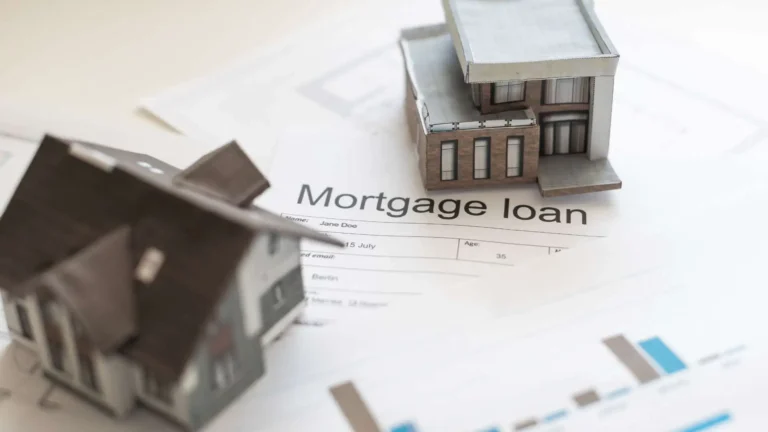Table of Contents
Preparing to buy a home is about more than just saving for a down payment or selecting a neighborhood. In today’s US real estate market—where rates and approval standards are stricter than ever—your credit strategy can make or break your homebuying dreams. The right moves, made about six months before you start serious mortgage shopping, can lower borrowing rates, boost your purchasing power, and save you thousands in interest over the life of your loan.
As real-estate and money coaches, we’ve watched hundreds of buyers succeed (or stumble) based on how well they understood and executed a game plan for their credit. In this comprehensive, easy-to-follow guide, we walk you through exactly what to do, when, and how.
Beem empowers you to master your finances with ease. From tracking expenses to improving credit, Beem makes financial confidence simple and stress-free.
Why Start Credit Prep 6 Months in Advance?
Many US buyers consider credit only after consulting with a lender. The reality? By then, it may be too late to make the biggest impact on your mortgage rate or approval odds. The credit bureaus update monthly—so big changes, like raising your score by 30-50 points, aren’t instant. The best lenders offer the lowest rates only to those with stellar reports and optimal utilization ratios.
Why start early?
- It allows time for slow credit bureau updates, corrections, and creditor reporting cycles to occur.
- Many credit improvements (paying down balances, disputing errors, fixing old lates) take several cycles to reflect on your report.
- Mortgage interest rates move fast—just a small score increase can unlock a lower rate or drop mortgage insurance, saving you thousands.
Early planning prevents last-minute panic, gives you time to shop for the best mortgage, and sets your offer apart in competitive markets.
Which Credit Report Issues Should You Fix First?
The first step is to pull your free annual credit reports and scrutinize every line for errors, outdated debts, or red flags. You can download them from all three bureaus (Experian, Equifax, TransUnion) every year.
What should you focus on?
- Late payments: Even a single late payment in the last 24 months can tank your score or spook a mortgage underwriter. If you see an error (a payment you know was on time), dispute it directly with the bureau and the creditor.
- Collections or charge-offs: These massively hurt your middle credit score. If a collection is inaccurate, dispute it. If valid, contact the creditor and negotiate a pay-for-delete or a satisfaction letter.
- High balances reported as past due: Your report should show either “Paid as agreed” or “Current.” Errors—such as debts you’ve paid off still showing up as open/past due—are fixable if caught early.
- Fraudulent accounts or hard pulls: Any line of credit you never opened, or credit pulls that don’t look familiar, could signal identity theft. Dispute and resolve these issues as quickly as possible.
Be detail-oriented here: Errors must be corrected with documentation, and changes may take 30–60 days to show up. For many would-be buyers, this single step adds 10–40 points to their score and cleans up underwriter concerns instantly.
How Can You Optimize Credit Card Balances and Utilization?
Lenders don’t just check if you pay bills on time. The “utilization ratio”—how much credit you use compared with your total available credit—carries major weight in your mortgage score.
Here’s how to optimize it:
- Get each credit card’s balance below 30% of the limit.
- For a $5,000 limit, never let your balance report above $1,500.
- Ideally, aim for below 10%.
- The highest scoring buyers often have single-digit utilization—and it’s fine to carry small balances if you pay them by the due date.
- Pay ahead of the statement closing date.
- Most cards report balances immediately after the statement closes, so pay down your balance early and avoid high reported balances.
- Do not close old cards.
- Closing aged accounts can lower your score by reducing available credit and shortening your credit history.
- Reduce loans and lines with the highest utilization first.
- Focus on cards that are maxed out, as they have the most negative impact.
Why does this move the needle?
The credit models used for US mortgages (including FICO) heavily penalize buyers who “use up” available limits. If you plan and strategically pay down your cards over the 6 months before shopping, your score can leap by dozens of points—sometimes instantly, sometimes over 1-2 reporting cycles.
What About Old Debts and New Accounts?
Old debts, collections, or charge-offs:
Should you pay these off?
- If the debt is valid, paying it off can look better to a lender—but in some cases, paying a very old collection may cause it to reappear as a “recent negative” hit in the scoring model. Speak with a loan officer or credit pro about “pay-for-delete” arrangements.
- Never ignore an active collection account if you know you will be applying soon.
New accounts:
Should you open or close new credit lines?
- Six months out, avoid opening any new credit cards, auto loans, personal loans, or anything “just to boost your score.” New inquiries and accounts lower your age-of-credit metrics and can drop your FICO score.
- Do not close old and established accounts, even if you rarely use them, as this can also shorten your credit history and impact your score.
Timing is everything. Open or close accounts only after your mortgage closes—unless directed by a qualified advisor to address a specific problem.
How Should You Handle Existing Loans and Installment Payments?
Many buyers wonder how to juggle student loans, car payments, or personal loans as they prepare for mortgage shopping.
Best practices:
- Keep all loans current: Absolutely no missed payments—mortgage underwriters are particularly strict in this regard.
- Avoid lump-sum payoffs unless advised: Sometimes, keeping old installment loans (such as student loans, if manageable) helps your “mix” and credit history.
- Do not apply for new financing: Avoid car leases, private loans, or “no-interest” buy-now-pay-later plans, which all appear on your report and can reduce borrowing capacity.
- Paying down existing loans: If your debt-to-income (DTI) ratio is high, paying off loans can help—but verify with your lender; sometimes, keeping cash on hand for your down payment is more important.
Underwriters will scrutinize your DTI closely. Adjusting large loans months before mortgage shopping allows your report, payment habits, and available funds to all show their best side at approval time.
How Do Credit Inquiries and Score Monitoring Work Before a Mortgage?
Staying on top of your credit score is important—but you want to avoid unnecessary hits or confusion.
Credit monitoring basics:
- Soft inquiries: Checking your own score or using free monitoring apps does not affect your rating.
- Hard inquiries: New credit card or loan applications (including car shopping, furniture store credit, etc.) generate hard pulls, which will reduce your score by several points each time and remain for two years—so avoid them in your prep period.
Rate shopping for a mortgage:
When you reach the formal pre-approval window, the credit bureaus “deduplicate” multiple mortgage inquiries within a short period (typically 14–45 days), counting them as a single inquiry. So, you can shop lenders for rates without fearing multiple ding—as long as you do it strategically.
Building a record of stable, low-inquiry credit use is attractive to lenders and helps maintain a strong final mortgage pull.
When Should You Freeze or Lock Your Credit?
Identity theft can derail your homebuying plans, causing significant delays and additional costs. If you suspect you’re at risk, a credit freeze stops new lenders from accessing your file—but it’s not always necessary.
Best practices:
- Freeze if you have experienced recent identity theft, major data breaches, or unauthorized access.
- Inform your lender and unfreeze your credit a few days before it will be pulled for pre-approval or underwriting.
- Do not accidentally leave your credit locked when shopping for a mortgage—this can slow down the process.
- Set calendar reminders for freezing and unfreezing as needed as you approach your mortgage window.
For most buyers, regular score monitoring and a robust password manager are typically sufficient. Consider a freeze if you have a genuine risk or want added peace of mind during a prolonged home search.
Quick 6-Month Pre-Mortgage Credit Prep Checklist
- Download all three free credit reports and correct inaccuracies immediately
- Attack credit card balances to drive utilization below 30%, shooting for 10% or less
- Dispute or settle any negative marks, unverifiable late payments, or active collections
- Make all installment loan payments on time—no exceptions allowed
- Avoid opening new cards or loans, even for large necessary purchases, until after closing
- Grow your on-time payment streak and keep your oldest accounts open
- Schedule one or two “credit health” check-ins before mortgage applications
- Decide early if you need to freeze, and plan when to unfreeze for pre-approval
Conclusion: 6-Month Credit Strategy Before Mortgage Shopping
The six months before you begin mortgage shopping is your optimal window to present the best possible credit profile to lenders. The steps outlined here are simple—but sticking to them takes discipline and planning.
By proactively correcting report errors, lowering your utilization, pausing new accounts, and making all payments on time, you can maximize your approval odds and access the best terms available. Not only does this make homebuying smoother, but it also adds up to potentially tens of thousands of dollars in savings over the life of your loan—money you can keep for improvements or your long-term financial security.
We’ve watched buyers win dream homes they never thought possible, simply by understanding that mortgage approval is a process where every detail matters. Making smart credit moves now sets you up for lower rates, lower payments, smoother closings, and more real estate options as you enter shopping season with confidence. Prepare early, work your plan, and you’ll enter the market stronger than ever.
Beem supports homebuyers with smart financial tools that make planning, saving, and managing credit easier. It’s designed to help you feel confident at every step of your homeownership journey. Download Beem App now!















































